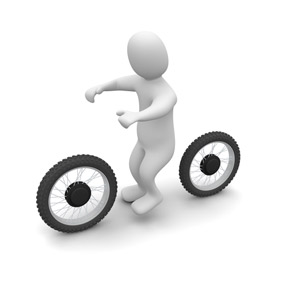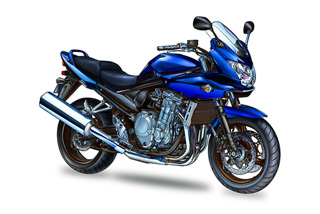
So you wanna buy a bike. Pre-owned, you say. It's gonna save you some money. Addition to this, you should also buy a two wheeler insurance to cover yourself against any unforeseen circumstances. Cool. You start checking online and magazine ads to find a few interesting options. Great. What next? You set out to buy one. Neat! Not quite. Here are tips; checklist, if you please, to help you buy a good deal.
1. Do some research.
Keep your "sixth-sense," gut-feeling" and "intuition" locked away while you prepare to buy a pre-owned bike. Do some fact finding about the model you wish to buy. What kind of reputation did the model have, what were the major design flaws in it, if any, and any other facts about it that you should know before you check out the bike at the owner's.
2. Check the bike out. Thoroughly.
Make two checks. An overall cosmetic check should be done to look for inconsistencies in paint, scratches, identifying crash signs and cracks in the plastic. Then make a thorough examination of the bike. It's always better to get a bike-savvy friend along. And a flashlight. Look for leaking fluid, rust, especially in the fuel tank, continuity of the cables, condition of the chain and sprocket and cracks in the wiring. Put the bike on centre-stand and look at it from the centre. Look for symmetry. This gives an indication of whether the bike was involved in a crash. Also check tire wear.
3. Get it started.
It's always advisable to cold start a bike. This gives you a very good idea of the condition of the bike. Check for any unusual noise during idling and acceleration. Check all levers for the amount of play. Check lights, indicators and horn. Look at how much smoke comes out of the exhaust and check for odd smells. See how the throttle responds and feel if there are any heavy vibrations.
4. Match the VINs.
The Vehicle Identification Numbers on the frame and the engine should match. And while you are doing your bike inspection, let your friend call the manufacturer, the insurance company and the state authorities. This will tell you if the bike has been involved in a crash or any recall information and also if it has been reported stolen.
5. Check the maintenance records.
Ask the owner to share with you the maintenance records of the bike. If there are none, ask the owner how frequently the bike had been serviced and from whom and ask the owner about the motor insurance.
6. Take a test ride.
Finally, get on the bike and drive it for yourself. Ease into first gear and apply the brakes. They should respond nicely. Release them. Release the clutch. Again put the bike in first gear. Increase the throttle slowly. Swerve the bike to the right and left gently to see how it responds and how easily it can be controlled. Listen for odd noises like creaking and rattling. Put all these in your head and ask the owner for clarification once you have finished your test ride.
7. Negotiate.

For every problem you find in the bike, you can bring down the asking rate. So do not hesitate to negotiate. Since you also have a friend who knows a little more about bikes, this should not be difficult. Once you are satisfied that you have a good deal, sign the paperwork. And off you go on your bike!